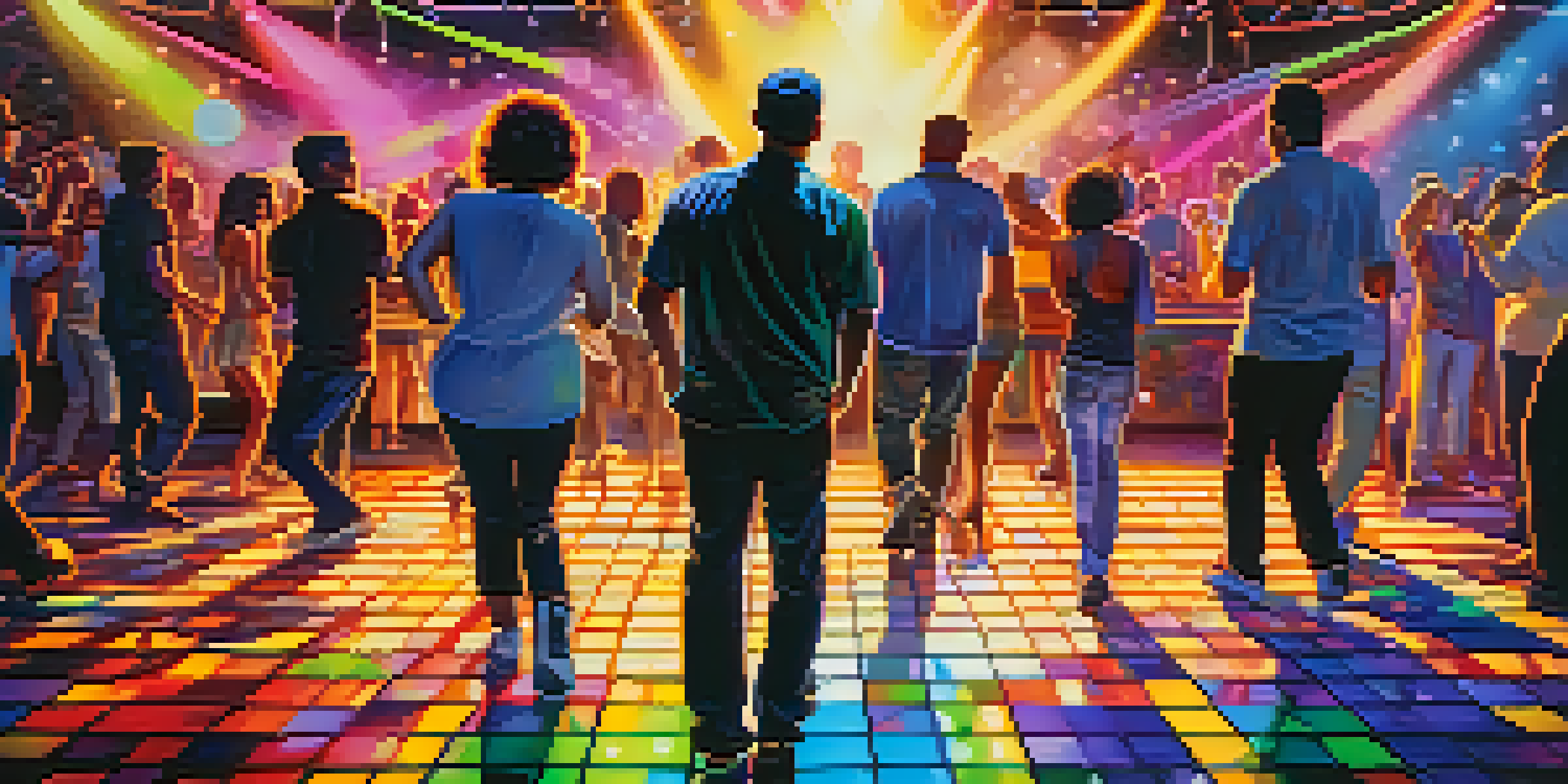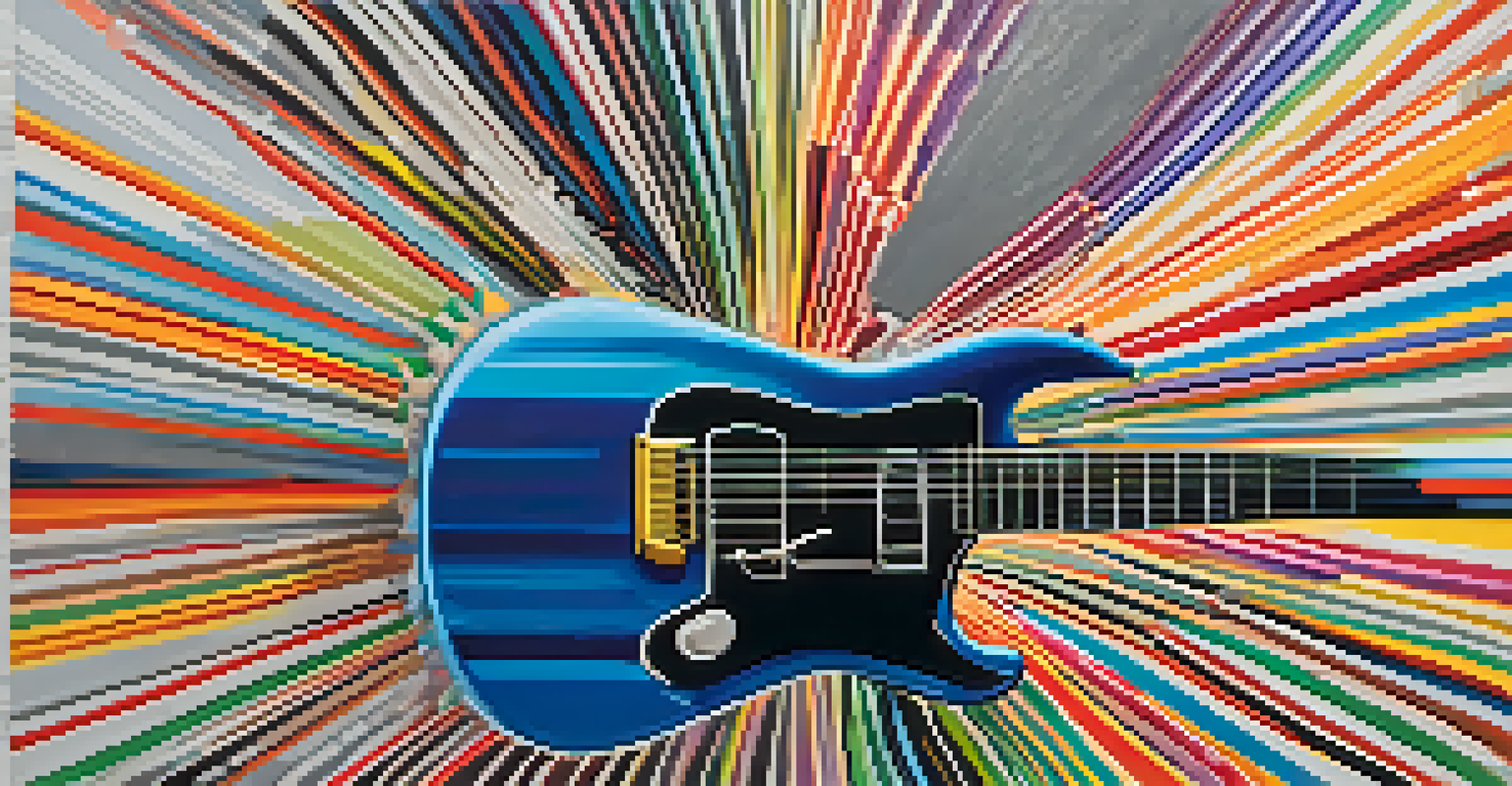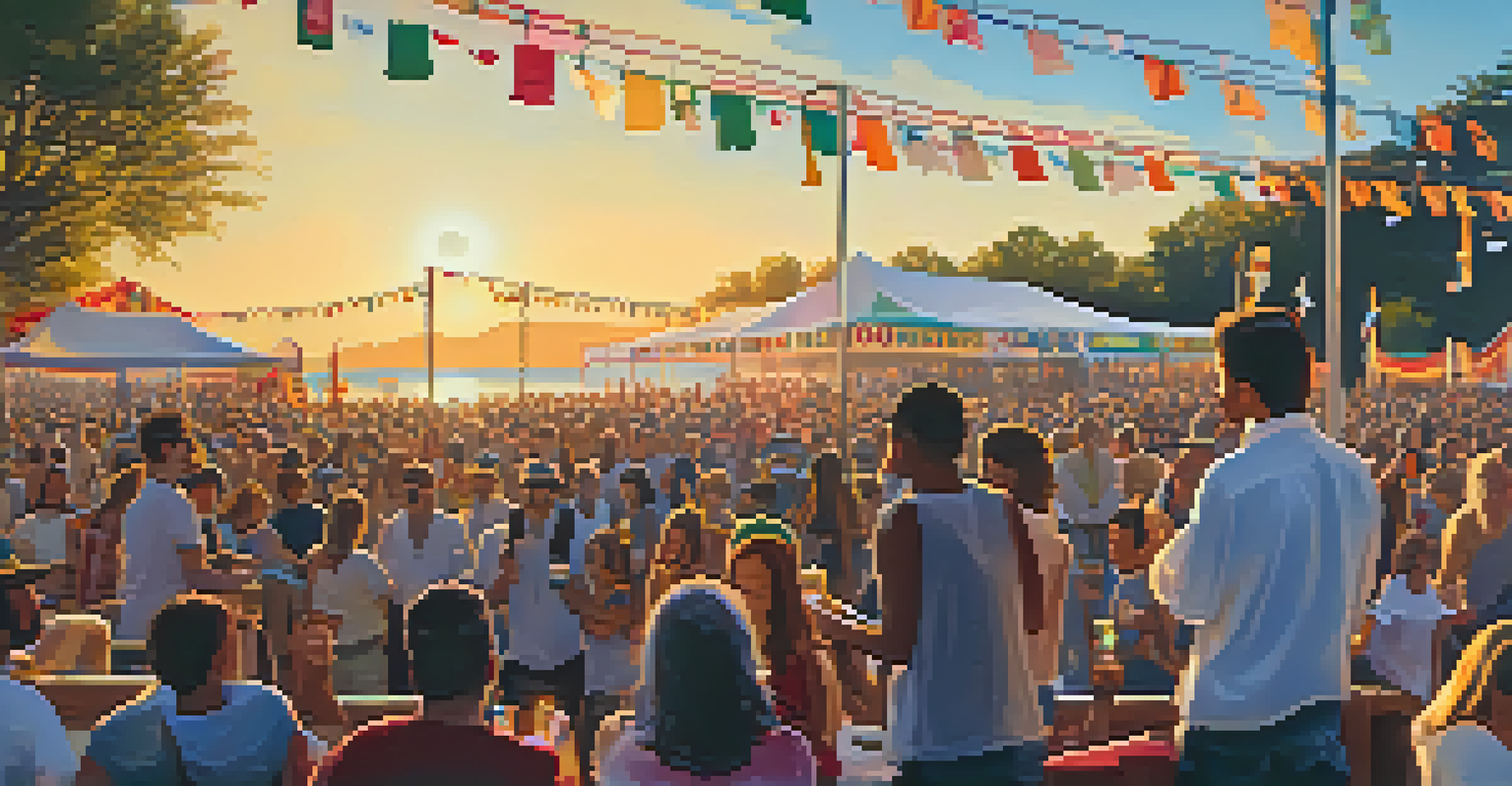Guitar and Dance Music: The Basslines That Move Us

The Heartbeat of Dance Music: Understanding Basslines
Basslines are often described as the heartbeat of dance music. They create the rhythm and foundation that gets people moving on the dance floor. Without a solid bassline, a song might feel disjointed or lacking in energy, much like a car without its engine.
Music can change the world because it can change people.
In dance music, the bassline often works in harmony with the kick drum, providing a sense of drive and groove. This combination is what compels listeners to tap their feet and sway their bodies. Think of it as a conversation between two friends, where each element plays off the other to create a lively atmosphere.
For example, iconic tracks like Daft Punk’s 'One More Time' showcase how a catchy bassline can elevate the overall feel of a song. It’s this interplay that makes dance music so infectious and enjoyable, drawing people into a euphoric experience.
The Role of Guitar in Dance Music: A Surprising Blend
While basslines are crucial, the incorporation of guitar in dance music adds a unique flavor that enhances the overall sound. Guitars can introduce melodic lines and harmonic textures, creating a rich tapestry of sound that captivates listeners. They can bring a sense of warmth and familiarity, much like a cozy blanket on a chilly night.

Consider the hit track 'Titanium' by David Guetta featuring Sia. The guitar riffs blend seamlessly with the electronic elements, creating a memorable hook that resonates with audiences. This fusion of genres demonstrates how guitar can complement the pulsating energy of electronic beats.
Basslines Drive Dance Music
Basslines act as the heartbeat of dance music, creating the rhythm and energy that gets people moving on the dance floor.
Moreover, the versatility of the guitar allows artists to experiment with different styles, from funk and rock to jazz. This adaptability not only enriches the music but also broadens its appeal, inviting a diverse range of listeners to join the dance party.
Basslines in Different Dance Genres: A World of Variety
Dance music is an umbrella term that encompasses various genres, each with its own take on basslines. For instance, house music often features deep, smooth basslines that create a laid-back vibe, while dubstep is known for its heavy, wobbly bass that can shake the ground underfoot. This diversity allows for a wide array of dance experiences, appealing to different moods and settings.
The only truth is music.
Take a track like 'Scary Monsters and Nice Sprites' by Skrillex. Its aggressive bass drops and intense beats can energize a crowd, while a deep house track like 'Can't Get Enough' by Soulsearcher invites a more relaxed, groovy atmosphere. The choice of bassline can completely change the feeling of the music.
Understanding these differences can enhance your listening experience and help you appreciate the artistry involved in crafting these basslines. Whether you prefer the smooth rhythms of house or the explosive drops of dubstep, there's a bassline out there that will resonate with you.
Creating Catchy Basslines: The Art and Science
Crafting a catchy bassline requires a blend of creativity and technical skill. Producers often start by experimenting with different notes and rhythms to find a groove that feels right. It's a bit like cooking; sometimes, you have to taste as you go to get the flavors just right.
One common technique is using syncopation, where the bassline plays off the expected rhythm, creating an engaging push and pull that captures listeners' attention. This can transform an ordinary bassline into something memorable, encouraging people to hit the dance floor.
Guitar Adds Unique Flavor
The integration of guitar in dance music introduces melodic lines and warmth, enhancing the overall sound and appeal.
In dance music production software, tools like MIDI programming allow artists to manipulate sounds easily, making it possible to create unique basslines that stand out. This digital approach has democratized music-making, enabling aspiring producers to experiment and develop their sound without needing a full band.
Famous Songs with Iconic Basslines: A Closer Look
Some songs have become legendary largely due to their unforgettable basslines. Classic tracks like 'Billie Jean' by Michael Jackson showcase how a simple yet effective bassline can dominate a song, making it instantly recognizable. This is a testament to the power of a well-crafted bassline in capturing an audience's attention.
Another example is 'I Feel for You' by Bob Sinclar, where the bassline drives the whole track, creating an irresistible urge to dance. These songs remind us that sometimes, less is more; a straightforward bassline can be the key ingredient that elevates the music.
By analyzing these iconic tracks, we can gain insights into what makes a bassline work and how it contributes to the overall impact of a song. It's clear that the right bassline can make all the difference, turning a good song into a timeless hit.
The Dance Floor Experience: How Basslines Connect Us
When we hit the dance floor, it’s often the basslines that create a sense of unity among the crowd. The deep, resonating sounds can evoke emotions and foster connections, making us feel like we’re part of something larger. This communal experience is one of the most powerful aspects of dance music.
Imagine a packed club where the bassline drops, and the entire room responds with a collective cheer. It's a moment of shared joy and energy that can create lasting memories. The bassline serves as a bridge, connecting individuals through music and movement.
Diverse Genres, Diverse Basslines
Different dance genres showcase a variety of basslines, each contributing uniquely to the mood and experience of the music.
This phenomenon is not just limited to clubs; festivals and concerts amplify this connection even further. The bass vibrates through the air, creating an immersive experience that transcends individual differences, reminding us of the universal language of music.
The Future of Guitar and Dance Music: Trends to Watch
As the music landscape continues to evolve, the fusion of guitar and dance music is likely to grow even more dynamic. Artists are constantly experimenting with new sounds and technologies, pushing the boundaries of what’s possible. This evolution opens up exciting possibilities for innovative basslines and guitar riffs.
Emerging genres, such as future bass, blend electronic elements with live instrumentation, including guitars. This trend reflects a broader desire for authenticity and organic sounds in a digital age. Listeners are increasingly drawn to music that feels both fresh and familiar.

In the coming years, we may see more collaborations between traditional musicians and electronic producers. This cross-pollination could lead to unique compositions that honor both the electric energy of dance music and the emotional depth of live instruments, creating new experiences for audiences everywhere.